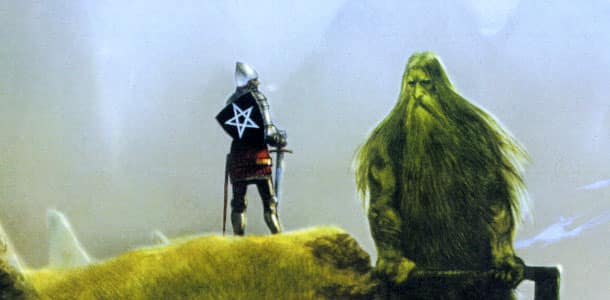
In the Roaches, the low peaks at the end of the Peak District bordering onto upper Staffordshire and the Cheshire plain, there are two places of great signficance which are seen by most as being inspirational behind the creation of the Green Chapel. Looking down into Lud's Church - into the Devil's lair. In the Staffordshire Roaches, we find it.

This compelling description makes us consider whether the Green Chapel was indeed based on a place - or places - known to the poet.

As he says, "it is the worst-cursed church that I ever came in". It is tump in the landscape which is overgrown with grass and which, when he enters, he describes as nobut an old cave. Indeed, Gawain says he can feel the Devil's presence in all his five wits he is overcome with a sense of foreboding and danger. The poet is determined to show the Green Chapel not as a church, but as a place where the Devil himself worships. Nobot an olde cave, or a crevisse of an olde cragge. The Green Chapel therefore is a dark and looming place which the poet places in our mind at the beginning of the story, where it lurks until part four when we are finally taken there. Green is seen as the colour of rebirth and of nature it is also the colour of evil. The poet introduces us to the Green Chapel in Part 1 of the poem, when Gawain is told to seek his nemesis by merely asking of him by name and of his home, the Green Chapel. The Green Chapel itself is a case in point. My aim has been to help today's reader not only enjoy the poem but also, hopefully, to encourage an engagement in its history and landscape. I've also been determined to reflect this research not just in terms of the translation and the illustrations but also by a series of detailed notes and supplementary information for readers, which also features in the book. In translatiing and illustrating my telling of Sir Gawain and the Green Knight, I've been fascinated by trying to understand the references made by the (unknown) poet and to grasp not just who he was but also where he was living and writing.

One of the many wonders of Sir Gawain and the Green Knight is its magnificent setting thought by many to be the Staffordshire Roaches The evidence is compelling.


 0 kommentar(er)
0 kommentar(er)
